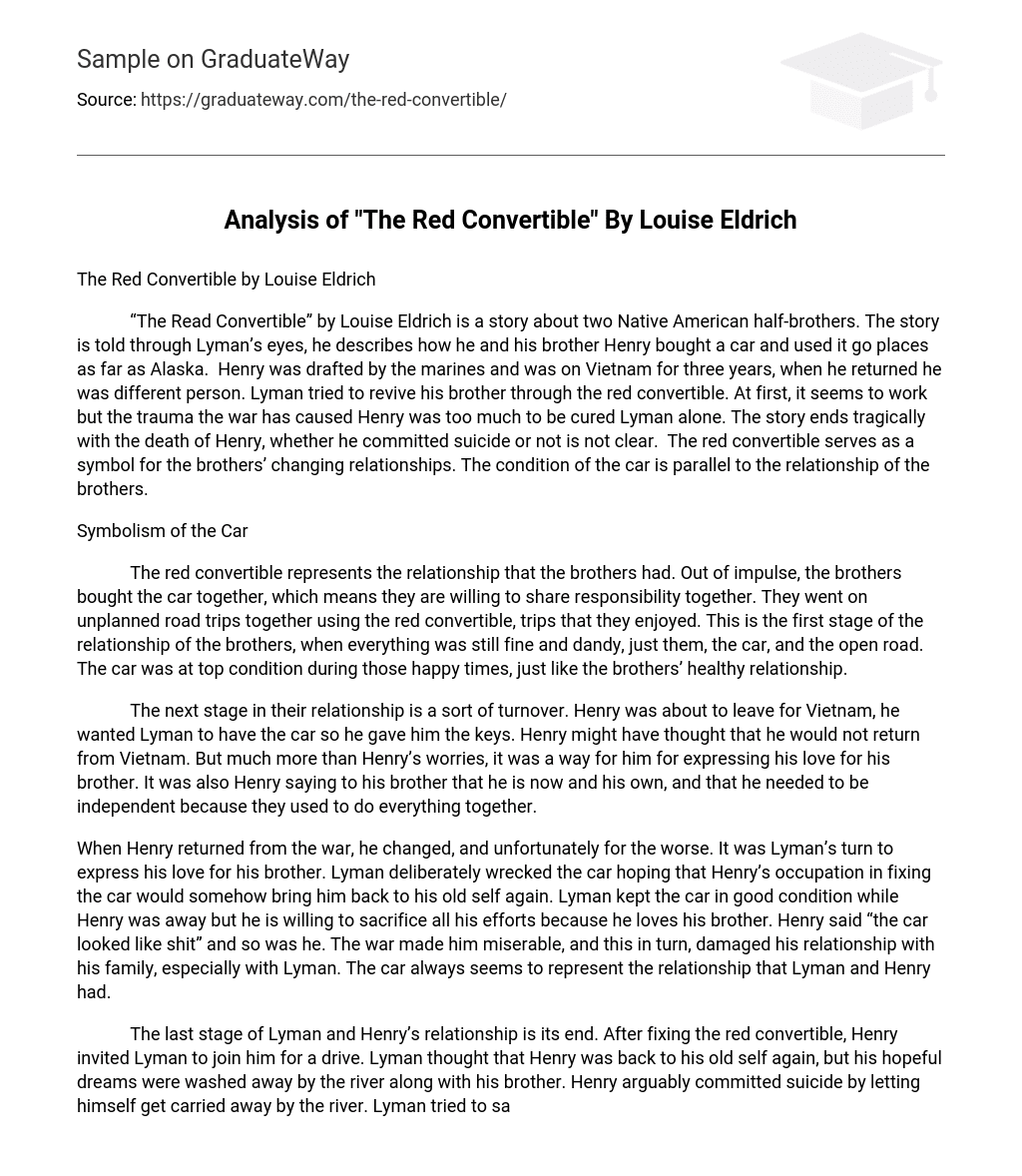“The Read Convertible” by Louise Eldrich is a story about two Native American half-brothers. The story is told through Lyman’s eyes, he describes how he and his brother Henry bought a car and used it go places as far as Alaska. Henry was drafted by the marines and was on Vietnam for three years, when he returned he was different person. Lyman tried to revive his brother through the red convertible. At first, it seems to work but the trauma the war has caused Henry was too much to be cured Lyman alone. The story ends tragically with the death of Henry, whether he committed suicide or not is not clear. The red convertible serves as a symbol for the brothers’ changing relationships. The condition of the car is parallel to the relationship of the brothers.
Symbolism of the Car
The red convertible represents the relationship that the brothers had. Out of impulse, the brothers bought the car together, which means they are willing to share responsibility together. They went on unplanned road trips together using the red convertible, trips that they enjoyed. This is the first stage of the relationship of the brothers, when everything was still fine and dandy, just them, the car, and the open road. The car was at top condition during those happy times, just like the brothers’ healthy relationship.
The next stage in their relationship is a sort of turnover. Henry was about to leave for Vietnam, he wanted Lyman to have the car so he gave him the keys. Henry might have thought that he would not return from Vietnam. But much more than Henry’s worries, it was a way for him for expressing his love for his brother. It was also Henry saying to his brother that he is now and his own, and that he needed to be independent because they used to do everything together.
When Henry returned from the war, he changed, and unfortunately for the worse. It was Lyman’s turn to express his love for his brother. Lyman deliberately wrecked the car hoping that Henry’s occupation in fixing the car would somehow bring him back to his old self again. Lyman kept the car in good condition while Henry was away but he is willing to sacrifice all his efforts because he loves his brother. Henry said “the car looked like shit” and so was he. The war made him miserable, and this in turn, damaged his relationship with his family, especially with Lyman. The car always seems to represent the relationship that Lyman and Henry had.
The last stage of Lyman and Henry’s relationship is its end. After fixing the red convertible, Henry invited Lyman to join him for a drive. Lyman thought that Henry was back to his old self again, but his hopeful dreams were washed away by the river along with his brother. Henry arguably committed suicide by letting himself get carried away by the river. Lyman tried to save him but he failed. The car represented the relationship that Lyman and Henry have. With Henry gone, Lyman have no more use for the car. He put it in first gear, turned on the headlights and let it sink to the river.
“Red Convertible.” The color red is the color of blood. Blood is what binds Henry and Lyman together, they are brothers. The color red could also mean anger. After the war, Henry became mean and angry. He needed to “cool off” by this he might mean drowning himself in the river. It is no coincidence that the author chose this color to be the color of the convertible, which is also a symbol. “Convertible” means being able to change in to something else. Henry did change, he was an easy going person before the war but the war changed him into a “mean” person. The characters of the story are Native Americans making the car “convertible” might be the author’s way of saying that the Native Americans are being assimilated (converted) to the mainstream American life because of their involvement in the war and society in general.
Works Cited
- Eldrich, Louise. “The Red Convertible”





